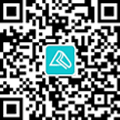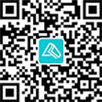掃碼下載APP
及時接收考試資訊及
備考信息

 新用戶掃碼下載
新用戶掃碼下載安卓版本:8.7.30 蘋果版本:8.7.30
開發(fā)者:北京正保會計科技有限公司
應(yīng)用涉及權(quán)限:查看權(quán)限>
APP隱私政策:查看政策>
HD版本上線:點(diǎn)擊下載>
ACCA P3 考試:KNOWLEDGE MANAGEMENT (2)
HUMAN RESOURCES AND KNOWLEDGE MANAGEMENT
As organisations have changed, downsized or expanded, there has been an increase in technology and in redundancies. In knowledge management terms, a reduction in employee numbers implies that those remaining have to demonstrate their value.
Employee turnover of, or the rise of the free agent implies that long-term contracts are on the way out. Loyalty is much reduced or, as suggested, ‘loyalty is dead – commitment and drive are lost, on the way out or gone’ (3) both from the organisational and employee perspective, as neither can afford loyalty in rapid dynamic markets. Organisations affected by such changes, through the loss of people and then talent, can’t keep relearning all the knowledge lost when people leave the company.
One such approach, which considers the individual rather than the process, is social network analysis. This helps identify and manage the hidden networks within an organisation.
According to Karen Stephenson, social network analysis is increasingly recognised as a means of leveraging organisational learning, retaining key workers, planning succession, harvesting innovative ideas, and managing both the rate and quality of change. This collective capability, Stephenson argues, depends on trusted relationships between individuals and has more power to influence the success or failure of an organisation than any managerial hierarchy (3).
In this approach, employees are a key consideration, with individual requirements which should be acknowledged. Employees want freedom, autonomy, space, and flexibility enables intellectual capital to be assessed. By offering these, the opportunity for knowledge growth and retention can be developed.
METHODS AND TECHNOLOGY
Other components of the knowledge management environment include computing systems.
With these systems, knowledge can be gathered by monitoring the phases or steps that creative workers go through in their daily work, and by identifying the information and decision-making methods they use and follow.
There are both manual methods of knowledge collection, and systems that can manage the collection and dissemination of that knowledge.
Some applied business examples demonstrate where these existing IT systems become knowledge-based systems. Internet-based systems have reduced control over information distribution and intellectual capital, and have an effect on information formation.
The internet infrastructure, as a tool to access information, is key and has value as an access route. However, the value lies not in having access to privileged information, but rather in the way the internet by offering new opportunities for those with the knowledge to start new businesses and share new ideas.
An example of an internet-based system becoming a knowledge management system is that used by the Lauck Group, an interior architecture firm based in the US. They had a project with a challenge: to design 10 offices in the US and Europe for a major client, quickly. The team had to include professionals of different nationalities, and be knowledgeable about the standards and requirements of their respective countries.
The Lauck team found top professionals in each country and created a virtual workspace for the whole team. During evening hours in the US, the European teams would do their work and post it to the virtual workspace. When the US teams came to work they would log in and provide their input.
The project – built on a 16-hour working day – was delivered on time, and met with every client requirement (4). In terms of project management this is unusual, in addition to the knowledge sharing and management that occurred as part of the process.
The value gained for the organisation is that, from now on, they have the ability to apply this new process to other projects. This positions them towards the mature end of the capability maturity model.
Companies implementing effective knowledge management systems expect to incorporate a variety of technologies, supported by a leadership approach that values learning. They also need an organisational structure that supports communication and information sharing, which in turn facilitates the processes for managing knowledge and change.

歷年樣卷

考試大綱

詞匯表

報考指南

考官文章

思維導(dǎo)圖
 新用戶掃碼下載
新用戶掃碼下載安卓版本:8.7.30 蘋果版本:8.7.30
開發(fā)者:北京正保會計科技有限公司
應(yīng)用涉及權(quán)限:查看權(quán)限>
APP隱私政策:查看政策>
HD版本上線:點(diǎn)擊下載>

官方公眾號
微信掃一掃

官方視頻號
微信掃一掃

官方抖音號
抖音掃一掃
Copyright © 2000 - m.yinshua168.com.cn All Rights Reserved. 北京正保會計科技有限公司 版權(quán)所有
京B2-20200959 京ICP備20012371號-7 出版物經(jīng)營許可證 ![]() 京公網(wǎng)安備 11010802044457號
京公網(wǎng)安備 11010802044457號